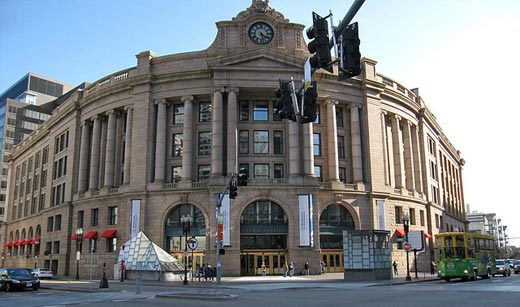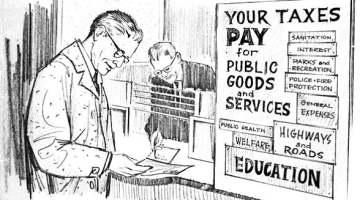This is not much of column but mainly a copy from this website on the history of South Station. The similarities between Boston South Station and Union Station are amazing. Start reading from “Through the Years” on the history of South Station.
- saved from demolition
- BRA (Boston Redevelopment Authority) took over for a price tag of 6.95 million
- saved portions of the station
- sold to the MBTA in 1978 for 6.1 million
We have done 1,2 and 3. We just need to find a buyer and do number 4.
The South Station building & its 98 year lease is up for sale.
You can have it for probably $100 million: https://t.co/t0a95rM9SG pic.twitter.com/vDcZpQ36GW
— Only In Boston (@OnlyInBOS) April 13, 2017
Through the Years
While it was already the largest, South Station quickly became the busiest train station in the world, handling about 38 million passengers in 1913, ranking higher than its second nearest competitor, Boston’s North Station, which handled 29 million and New York’s Grand Central Station, which handled 22 million that same year.
Following the heights of the early 1900s came a long period of further consolidations and decline in train travel.
Within 30 years of its opening, South Station’s metal train shed and the two-story metal-covered midway were demolished due to deterioration. Around that same time, interior alterations were made to passenger waiting rooms and service areas.
During World War I, a government takeover of rail helped stem the industry’s financial problems. Despite financial difficulties, passenger numbers still held strong. Then, in 1929, The Great Depression added to the station’s declining fortunes.
During World War II, trains were filled with soldiers traveling for military purposes. In 1945, swollen by GIs returning from war, South Station again made history when over 135,000 visitors poured into its halls each day.
Saved from Demolition
Soon after the war, the rail industry continued its descent, with the former rail kings faltering financially and the New Haven Railroad declaring bankruptcy. Automobile travel continued to climb in popularity with increased car sales and new highway systems. Boston, was no exception, with the old elevated Central Artery sprouting up in the 1950s, giving new, easier access to the city by automobile.
By the mid-1960s, South Station, the once grand and immaculate example of luxury and innovation, was a tired example of neglect and urban blight with the annual passenger count dipping to about 4.5 million, compared to the 38 million it served back in 1913.
The east wing of the station was torn down in the mid-60s to make way for a post office distribution center. The west wing went unused, the main waiting room was closed and 18 of the 28 platform tracks were destroyed.
In 1965, the Boston Redevelopment Authority (BRA) took over ownership of South Station for the price tag of $6.95 million. This was less than the Boston Terminal Company, the original developer, had paid for the land alone.
After acquiring the property, The BRA made plans to demolish the old station to make way for a new, modern facility with a people-mover on an elevated passageway connecting the station to Dewey Square, a direct passageway to the MOPED and an indoor sports arena.
Although not totally demolished, a wrecking ball did eventually remove a half-dozen tracks and a large portion of the building’s U-shaped edifice, spanning from the Fort Point Channel to the remaining edge of the South Station terminal building that stands today.
During the 1970s a local grassroots movement emerged in an effort to save what was left of the old station; which was a portion of its headhouse and its grand waiting room. As a result of their actions, South Station was added to the National Register of Historic Sites and the wrecking ball was thwarted.
Renovation & Revival
In 1978, the MBTA bought South Station for $6.1 million with plans to restore what was left of the historic site.
buspar no prescription
buy zithromax online
buy Flagyl no prescription
Flomax no prescription


